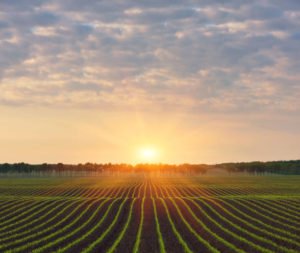By Amanda Duncan, President
 Farms and agri-service facilities face many potential pollution exposures, regardless if they are located in rural or urban locations. Farming facilities of all shapes and sizes, including crop farms, wineries, etc., should be aware of the potential site risks that may come with the day to day activities from running this type of business. Environmental issues that can arise from these sites include, but are not limited to:
Farms and agri-service facilities face many potential pollution exposures, regardless if they are located in rural or urban locations. Farming facilities of all shapes and sizes, including crop farms, wineries, etc., should be aware of the potential site risks that may come with the day to day activities from running this type of business. Environmental issues that can arise from these sites include, but are not limited to:
- Odor control — odors from animal farming facilities may impact neighboring populations.
- Pesticide/herbicide overspray — chemicals applied to crops could inadvertently affect a third party’s health.
- Misapplication of biosolids and manure — creating soils unusable for farming and storm water runoff issues.
- Over the road spills of chemicals and fertilizers — damaging nearby property, streams, and potentially wildlife.
- Storage of chemicals/fertilizers/equipment — causing an on-site pollution condition that must be cleaned up.
- Leaking storage tanks — causing extensive damage on-site and to neighboring properties.
- Wastewater management and wastewater lagoons — unintentional discharge of untreated wastewater causing first and third party property damage, and even bodily injury in some cases.
Pollution policies are available in the environmental insurance marketplace which can be tailored to meet the needs of the agribusiness industry. These policies provide coverage for on-site cleanup costs and third party bodily injury, property damage, and cleanup, with a reporting provision built into the policy (60 days in most cases). Additional details about this type of insurance include:
- Coverage is provided for all locations scheduled on the policy.
- Coverage for aboveground storage tanks is built into the policy form; underground storage tanks may be added via endorsement.
- Blanket Transportation Pollution liability is provided via endorsement, and Contractors Pollution Liability may be offered should the insured have a contracting exposure (for example, pesticide or biosolid application for others).
- Natural resources damage is defined and covered via the policy form.
Target customers who should consider purchasing Site Pollution coverage include: farm owners and operators, custom and contract farming, wineries, and commercial agri-service facilities. Premiums generally start at $3,000 for $1,000,000 policy limits.
Claims Scenarios:
A local farmer stored diesel fuel at his property to fuel his equipment. Unfortunately the tanks holding the fuel were found to be leaking, causing the farmer to pay for the clean up at his own property, as well as a neighboring farm as the fuel had migrated offsite.
A farmer was spraying pesticide on his property but due to windy conditions, the pesticide drifted over to a neighboring farm, causing extensive damage to food crops being grown on that farm and contaminating its soil.
A winery was fined by the Environmental Protection Agency (EPA) for failing to notify regulators of an ammonia release. They failed to notify the National Response Center as is required for releases of over 100 pounds.
A Midwestern state Water Works Department filed a lawsuit against farmers in the area, claiming that drainage from these farms acted as a conduit for fertilizer to move from the farm fields to waterways and contributed to high nitrate levels which resulted in algae bloom, causing fish kills and dead zones.
California officials filed suit against the owners of a vineyard, alleging that they violated land use regulations. It was alleged that they had improperly planted 750 vines too close to a stream without proper erosion control permits and repaired/reconstructed bridges over a stream, diverting its flow and affecting natural resources. In addition to paying fines, the vineyard owners hired experts and conducted environmental studies that will bring the winery’s overall cost to resolve the case to about $1.25 million.
